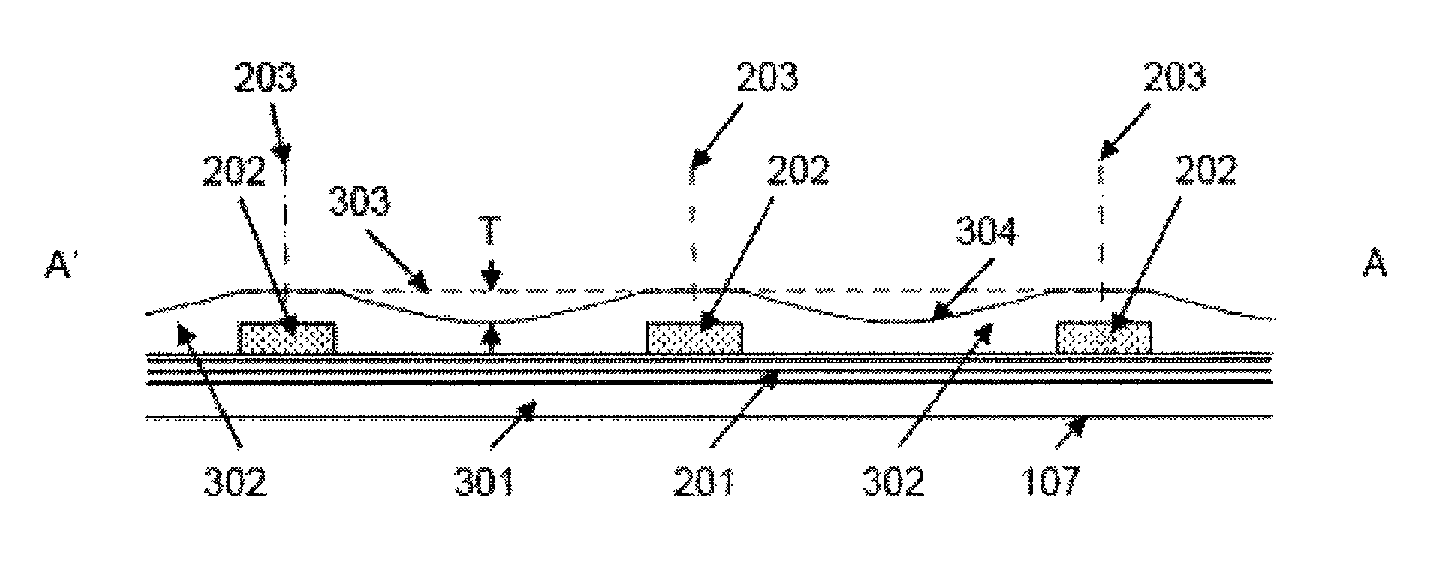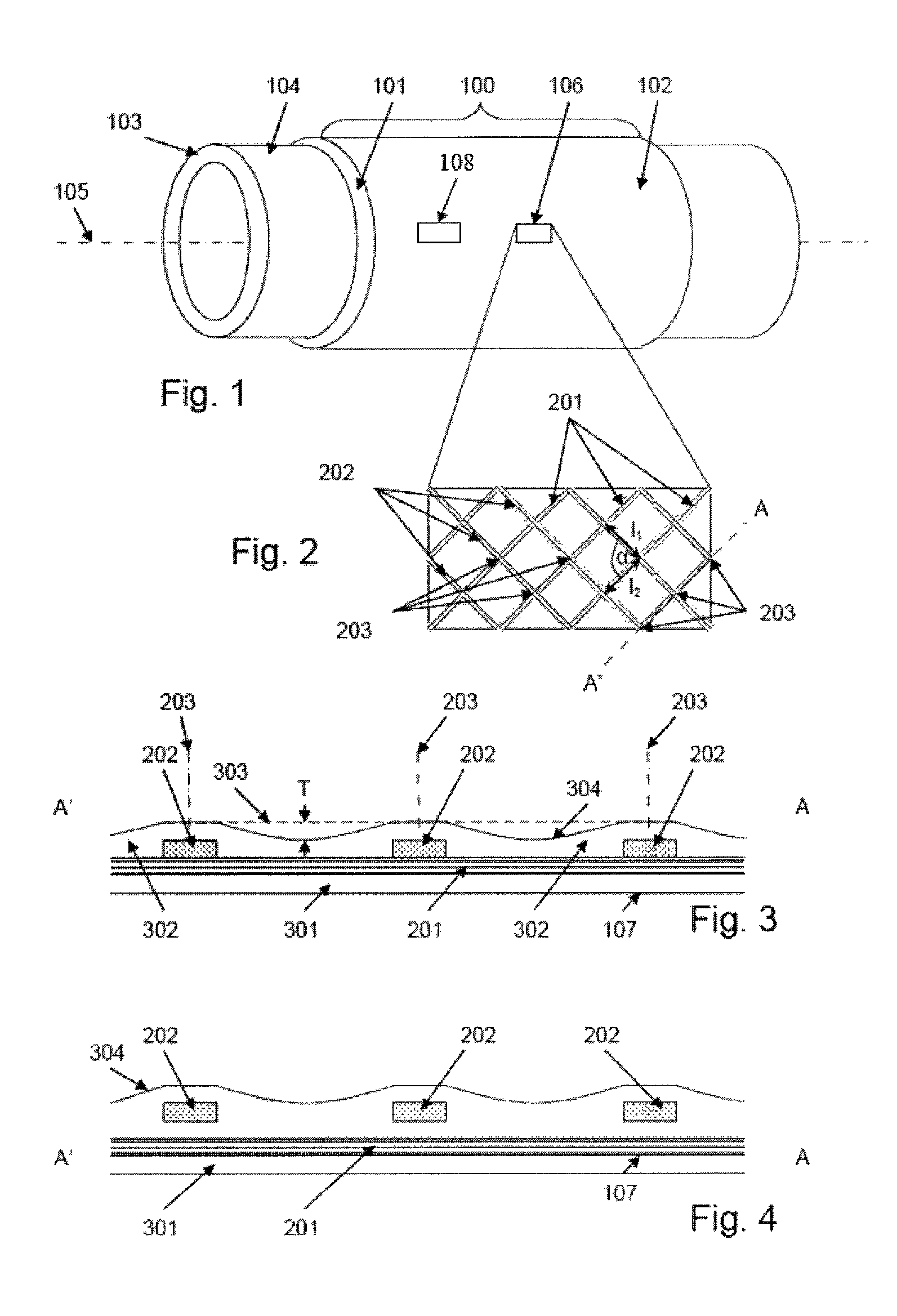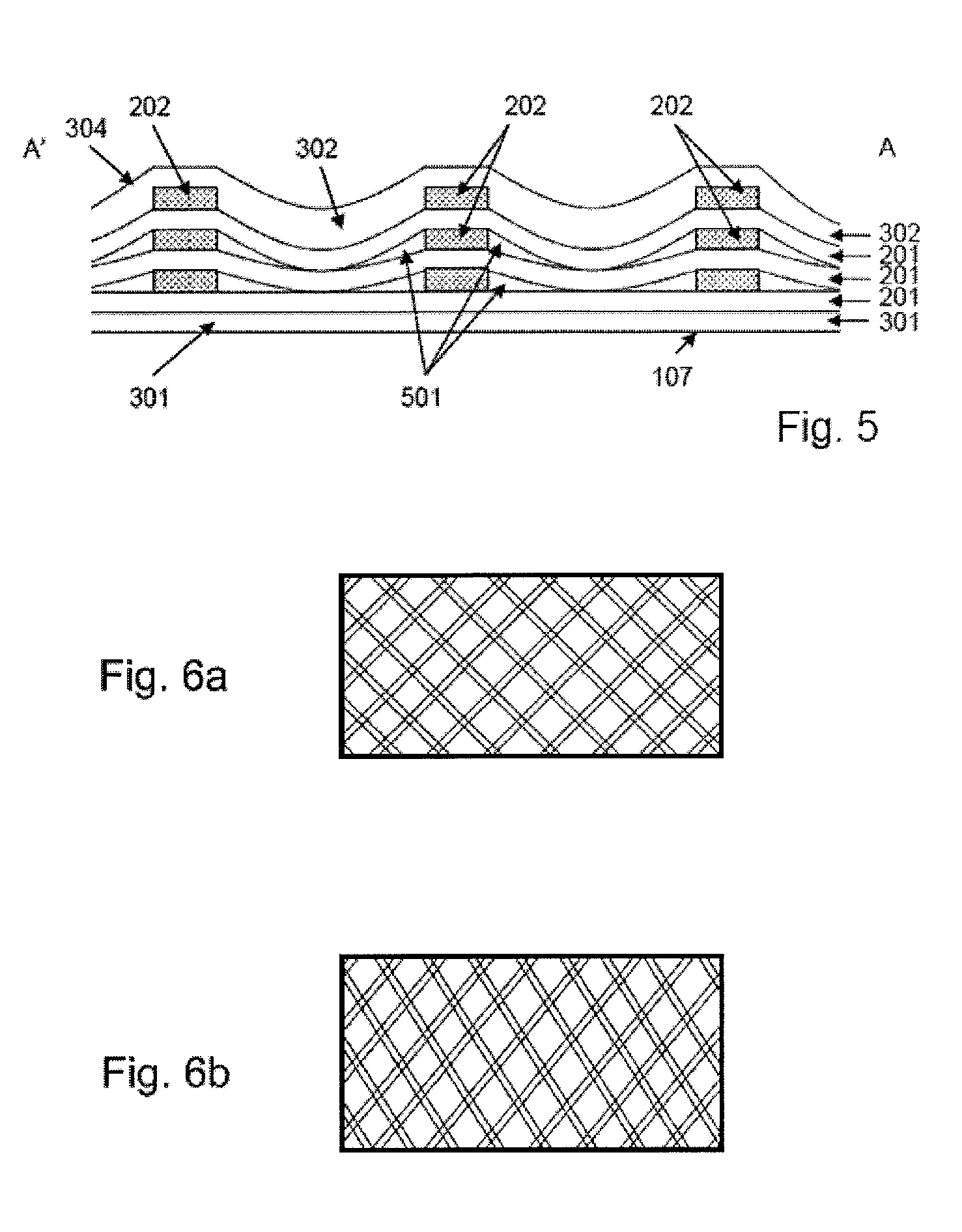Fuselage section of an aircraft and method for the production of the fuselage section
a fuselage section and aircraft technology, applied in the field of fuselage sections of aircraft, can solve the problems of reduced usable cabin diameter inside the fuselage section, reduced usable cabin fixtures, and still stiff structure of the fuselage section produced, so as to reduce the thickness reduce the weight, and increase the interior space of the fuselage section available for cabin fixtures
- Summary
- Abstract
- Description
- Claims
- Application Information
AI Technical Summary
Benefits of technology
Problems solved by technology
Method used
Image
Examples
Embodiment Construction
[0047]FIG. 1 shows a schematic representation of a hollow cylinder-shaped fuselage section 100 of an aircraft with its fuselage section skin 101, which fuselage section has been applied to a construction mold 103 and has already been cured in an autoclave process. The construction mold 103 is a hollow cylinder with an unstructured construction mold surface 104. The construction mold, the fuselage section 100 and the fuselage section skin 101 have a common longitudinal axis 105.
[0048]To form the shown cured fuselage section skin 101 with an integral stiffening structure, resin-impregnated fibers are applied, so as to be oriented in different fiber orientations, to the construction mold surface 104 which currently has no depressions, with the fiber orientations of the fibers that form the stiffening structure being different from the fiber orientations of the other fibers. To this end, first a continuous full-surface inner layer 301 of the fuselage section skin 101, the inner layer co...
PUM
| Property | Measurement | Unit |
|---|---|---|
| lattice angle | aaaaa | aaaaa |
| lattice angle | aaaaa | aaaaa |
| depth | aaaaa | aaaaa |
Abstract
Description
Claims
Application Information
 Login to View More
Login to View More - R&D
- Intellectual Property
- Life Sciences
- Materials
- Tech Scout
- Unparalleled Data Quality
- Higher Quality Content
- 60% Fewer Hallucinations
Browse by: Latest US Patents, China's latest patents, Technical Efficacy Thesaurus, Application Domain, Technology Topic, Popular Technical Reports.
© 2025 PatSnap. All rights reserved.Legal|Privacy policy|Modern Slavery Act Transparency Statement|Sitemap|About US| Contact US: help@patsnap.com



